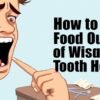Addiction is a complex and often misunderstood disease with severe consequences for those who suffer from it. To understand addiction treatment better, experts have identified four key components commonly called the “Four C’s of Addiction.” These components include craving, compulsion, consequences, and control. Let’s explore these elements in more detail and explain why they are crucial to understanding addiction.
Craving:
Craving is the compulsion to feed the addiction. It grows as intense as hunger, simulating a physical need. It seems vital for survival in the form of restlessness, sleeplessness, and anorexia. When drug users can’t satisfy their cravings, they experience symptoms like anxiety, agitation, and the inability to focus.
Compulsion:
In human psychology, “compulsion” denotes an indomitable urge or an overpowering desire to execute a particular action. A compelled person’s behavior is intense and overwhelming, driven towards a specific action.
An addiction-afflicted individual experiences an overwhelming urge to procure and use drugs. This form of behavior is known as “compulsive drug-seeking.”. To some, addiction represents a tenacious and persistent need to consume a substance, while compulsion manifests as an irresistible impulse to act.
Consequences:
Addiction can lead to problems with health, relationships, work, the law, and money. Even when we have apparent adverse outcomes, the behavior doesn’t change.
Addiction and crime are often linked because people keep using drugs even though they know it’s harmful. However, the effects of drug use don’t have to be illegal for there to be an addiction problem. For example, a person may feel hungover, foggy, and unable to do their job well the next day, but that doesn’t stop them from drinking too much every night.
When addiction sets in, using and looking for drugs precedes everything else.
Other consequences include:
- Injury when under the influence.
- Sensations of anxiety, irritation, or despair.
- Unclear thought patterns.
- Relationship problems.
- Run-ins with the law.
- A state of hopelessness.
- Feeling empty.
- Blackouts.
Control:
In the early stages of addiction, a person often tries to stop or cut back on the behavior. When a person has reached a point they can’t refrain, then they have reached a point they can’t control their drug use. “I don’t need treatment; I can quit cigarettes,” someone might claim. Nevertheless, once individuals realize they cannot change things independently, addiction treatment is necessary.
How to Cope:
You can work on getting better by yourself. What do you need to do to make yourself feel better? Be calmer, less worried, and less stressed. You can also try the following ways of coping:
- Slow down your movements and thoughts.
- Find out more about the problem or person before you face it.
- Watch what’s going on without necessarily doing anything.
- Break the problem up into pieces that you can handle.
- Keep yourself busy with something.
The Four C’s of Addiction are crucial components in understanding the disease of addiction. By understanding these components, individuals struggling with addiction can gain insight into their behavior and begin to take steps toward recovery. Seeking professional help is essential for anyone suffering from addiction, and there is no shame in reaching out for support. Remember, addiction is a treatable disease, and recovery is possible with the right help and support.










